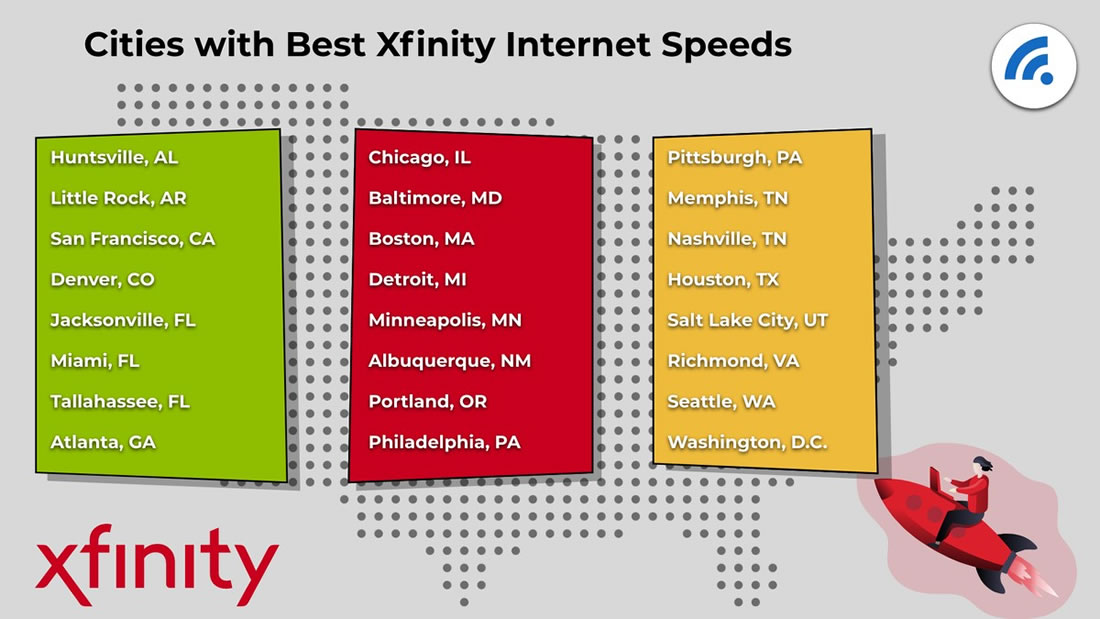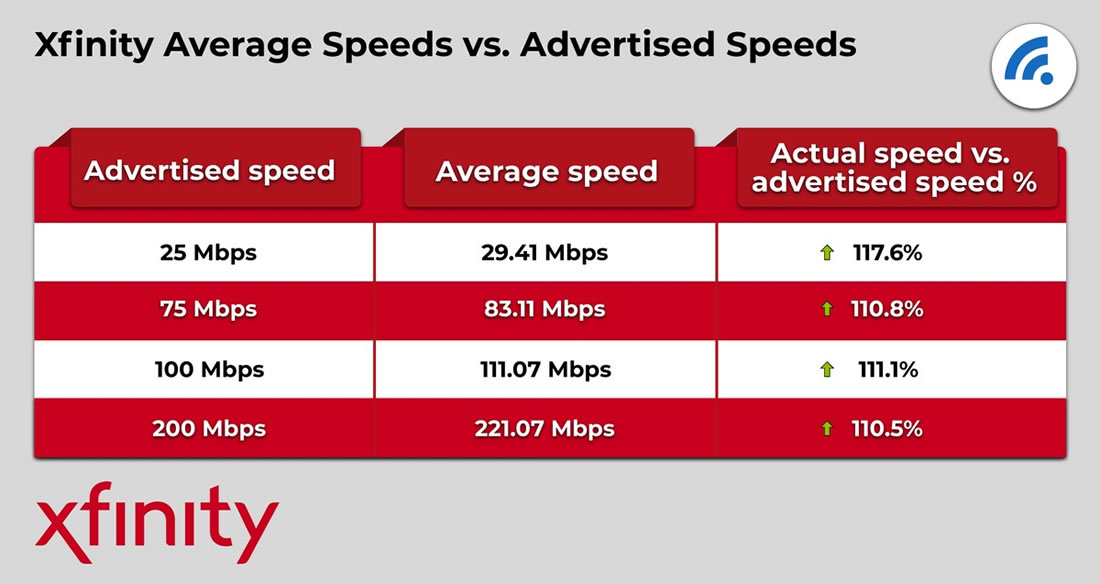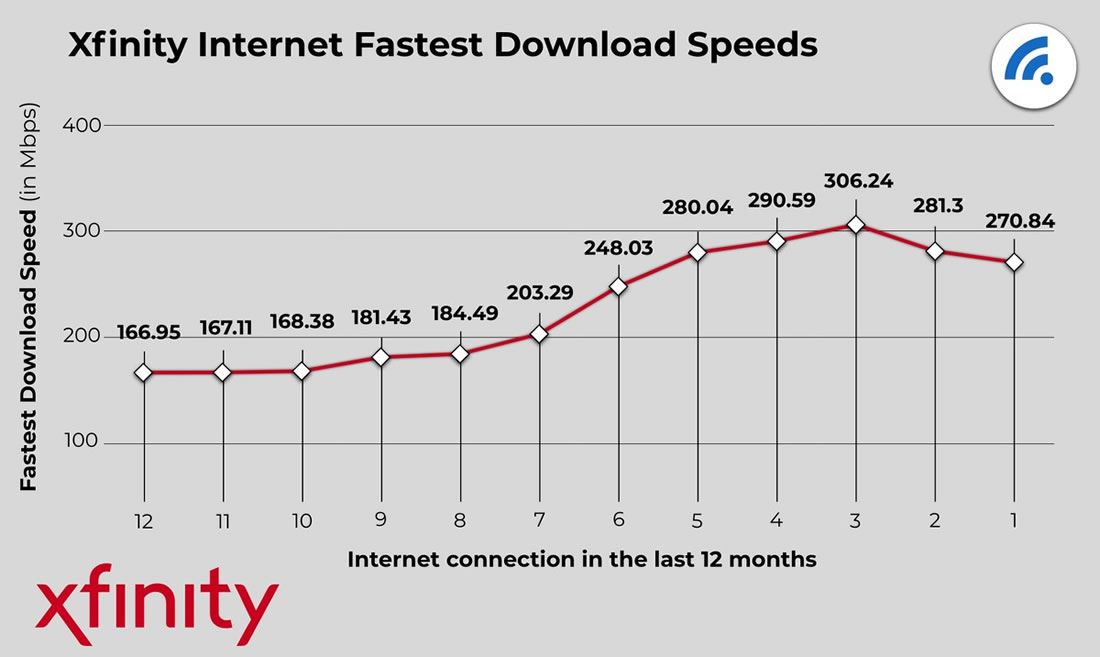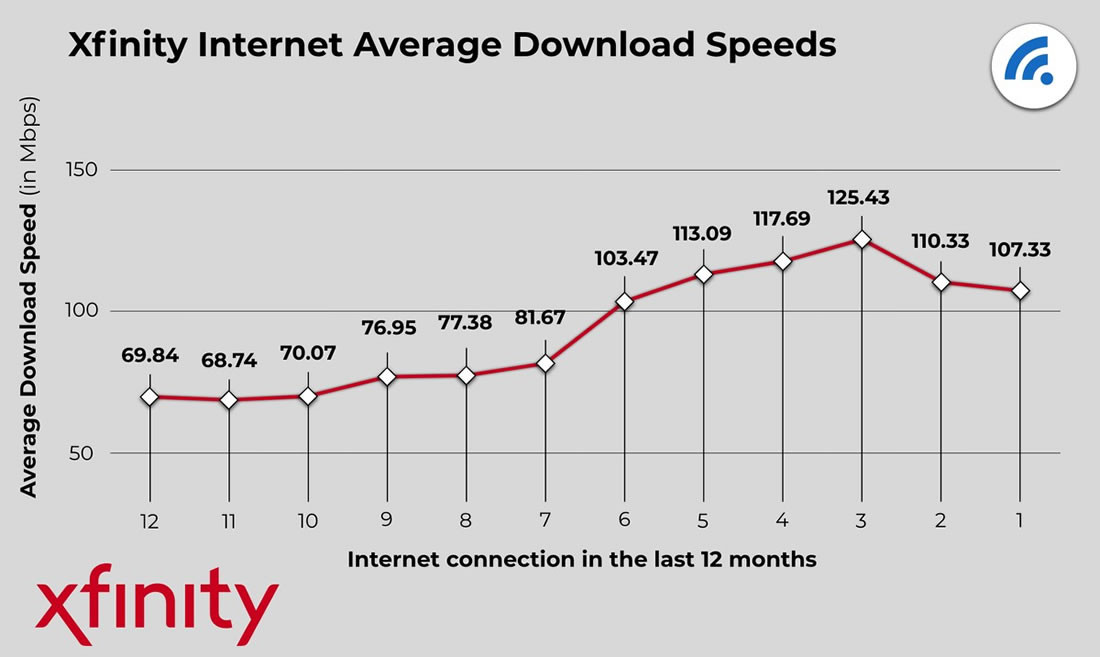This speed test is a way for Xfinity Internet customers to test their connections, partially to determine if anything is wrong and to determine if you are getting the download and upload speeds promised when you first signed up. While it is uncommon for certain providers, some users have reported not getting what they need, which is unacceptable and deserves addressing.
To get the most accurate results, we recommend using an ethernet cable and making sure there is nothing else taxing your connection or potentially interfering with it. We also suggest you perform multiple tests at different times during the day to get a fuller picture of your connection and its performance.
Your primary metric for internet speed and what you are likely primarily trying to measure. Your download speed is, simply put, how quickly you can download, stream files, or access information through your connection. ISPs will usually advertise and label their plans by this metric.
The opposite of download speed, but just as important for some users, the upload speed determines the rate at which your connection can send files or data to someone or somewhere else online. Remote workers or people who regularly upload large files online should take special note of this metric.
Ping rate is a measurement of how quickly your computer can send out a data packet and receive a response from a server. If you need a quick reaction time when using the internet, perhaps in video calls or when online gaming, this will be an important metric to note down. Average users are likely fine with a ping rate of 100ms or less, while people who need a better ping should aim for a rate of 30ms or less.
Xfinity is one of the top internet providers in the country, and as such, there are quite a few cities that it services well. Here are the cities with the fastest connections, all of which have at least 987 Mbps or better, with some having a 2,000Mbps plan available:


If you're considering getting a plan from Xfinity, this chart will tell you whether their actual speed matches their advertised speed for some of their most common plans. Fortunately, on average, Xfinity excels in this metric, often providing speeds above what was advertised to customers.

The following graph can be used to check what the top 10 percent of Xfinity customers are getting for download speeds over the last 12 months, as determined by other speeds tests.

This graph details the average speed (as determined by speed tests) of Xfinity customers over the last 12 months. Not too surprisingly, we found Xfinity to have some of the fastest average speeds in the country.
On average, your internet speed should at least 80 percent of your plan's advertised speed. If you see consistent results below that and you know for a fact that there is nothing else interfering with your connection, that is a cause for concern.
You can expect WiFi speeds to be about 30-50 percent of your advertised rate. Do note that things such as signal interference, distance from your modem, and the equipment you are using can make a huge difference.
As an absolute minimum, you should have a 5-10 Mbps download speed to use the internet in any rudimentary way. Any household with multiple users or hoping to do things such as stream Netflix at high definition should seek out a plan that offers download speeds of 25 Mbps or higher.
While the results you get from the speed test should be one of several factors used to determine if you are satisfied with your internet service, you should never tolerate getting less than what you were promised. We hope that you do some more research and investigation to determine if you're getting the best possible option for your household. No matter your decision and result, we hope this helped you, and we encourage you to use it again as needed.